-
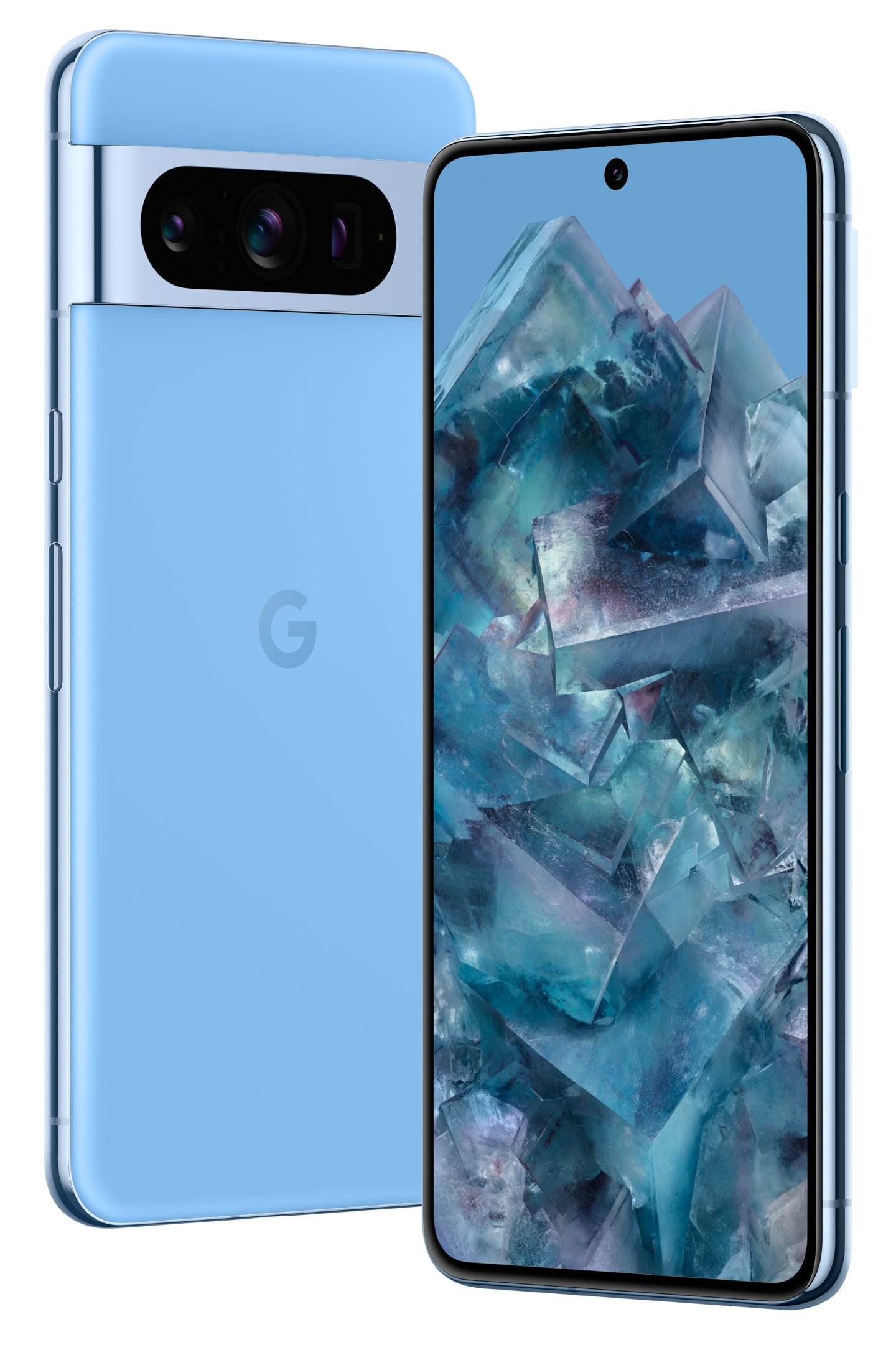 The Pixel 8 Pro in a lovely blue.Google
The Pixel 8 Pro in a lovely blue.Google -
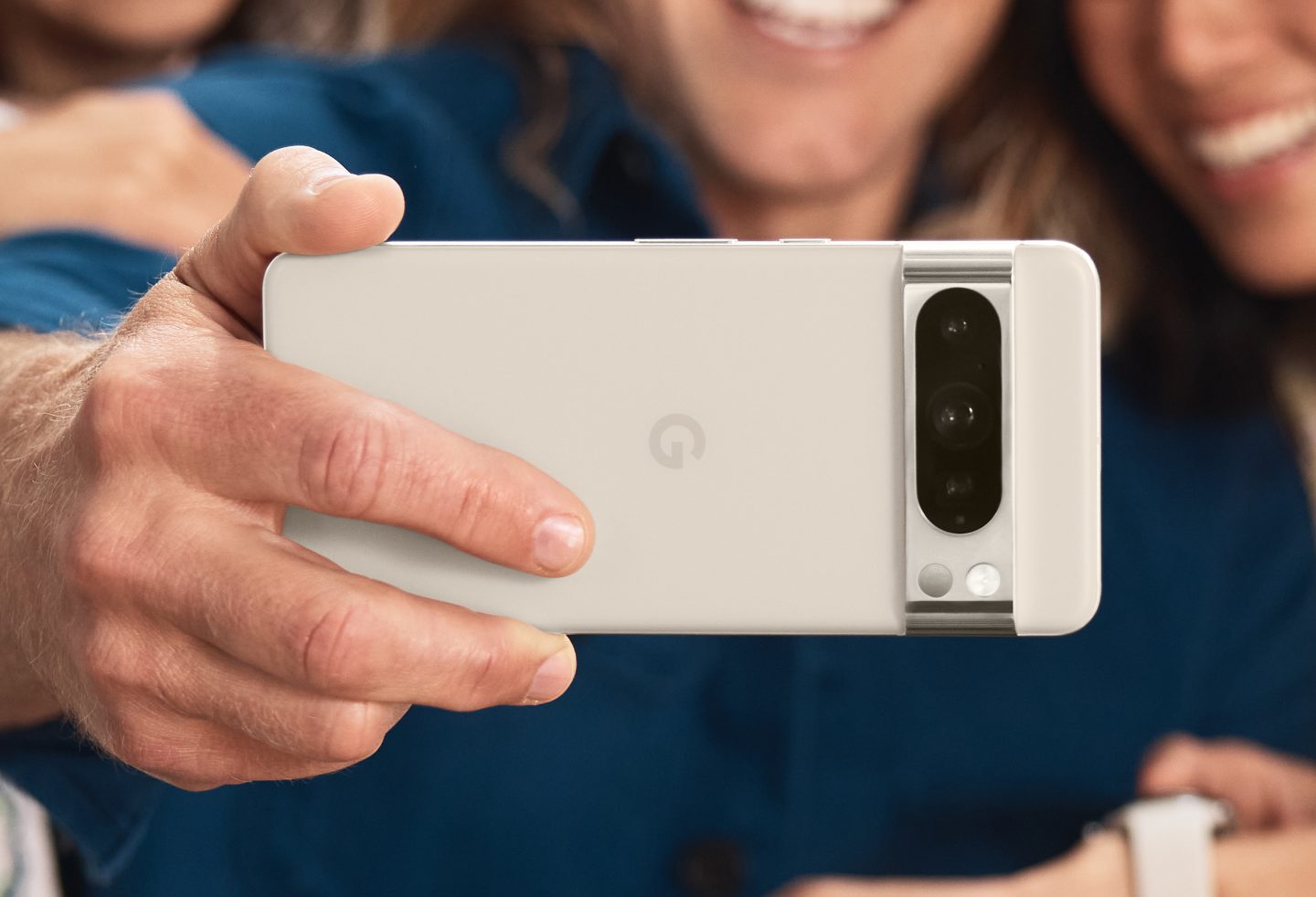 An unobstructed view of the back. Those bottom sensors are the new temperature sensor and the LED flash.Google
An unobstructed view of the back. Those bottom sensors are the new temperature sensor and the LED flash.Google -
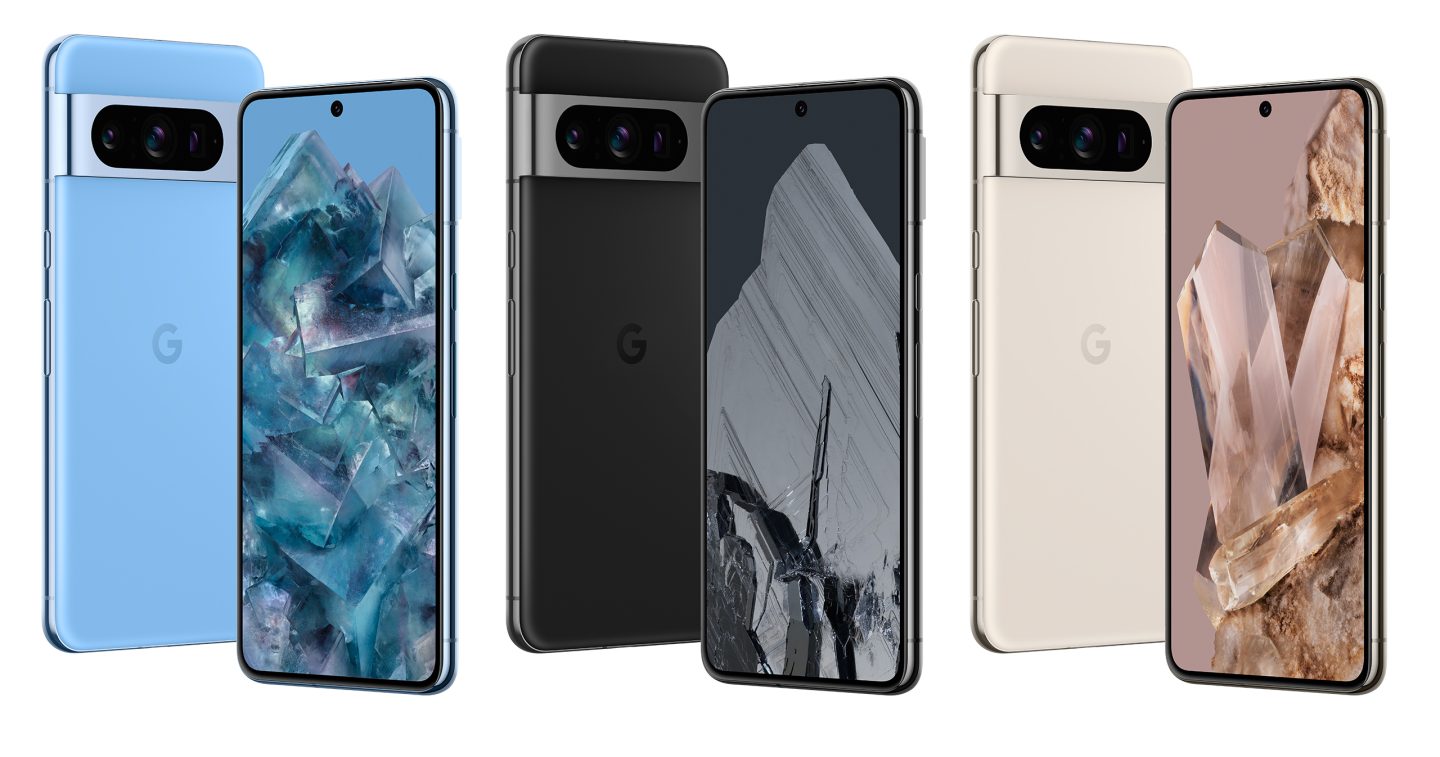 8 Pro colours. Also note the sides of the phone, which no longer feature a curved display.Google
8 Pro colours. Also note the sides of the phone, which no longer feature a curved display.Google -
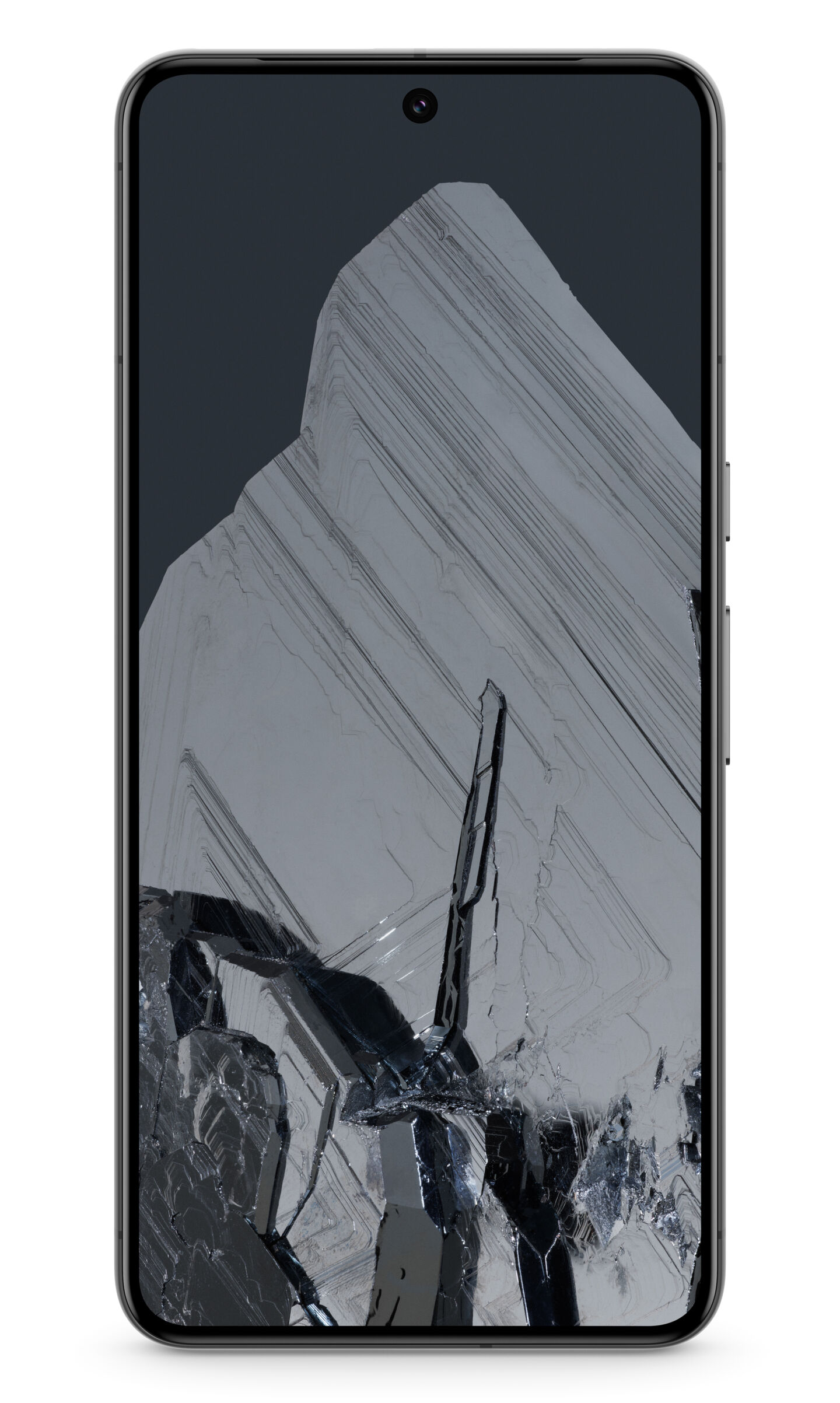 The display of the 8 Pro. Yep it's just a big rectangle.Google
The display of the 8 Pro. Yep it's just a big rectangle.Google
Google's newest flagship phone is finally official. The Pixel 8 and Pixel 8 Pro were both unveiled today, with the headline changes being a whopping seven years of updates, flat screens across the board, new CPUs, and a $100 price increase. The Pixel 8 Pro is officially $999, while the Pixel 8 is $699.
The Pixel 8 Pro features a fair number of design changes. The front screen is flat now, dumping a trend started by Samsung (and its ability to make curved OLED displays). For years, Android flagships have curved the side edges of their displays, making the edges of the screen distorted and more prone to glare and accidental touches. The Pixel 8 Pro now looks just like the Pixel 8, with a normal, flat display.
The 8 Pro also gets a "soft touch matte glass back," which sounds like the same finish that was applied to the Pixel Fold. We loved the Pixel Fold back, as the satiny finish looked nice, seemed durable, provided a bit of grip if you were just carrying the phone around, and did a good job of hiding fingerprints. The aluminum on the Pro model is still polished to a mirror shine, which has the opposite of all those qualities listed above (that is, it's slippery, easy to scratch, and greasy), but at least the back is improved. The camera bump on the Pro model merges all three cameras together under a single cover, and of course there's a temperature sensor that we'll talk about later.
As for specs, the Pro display is a 6.7-inch, 120 Hz, 2992×1344 OLED. Google is branding this display "Super Actua" because it's one of the brightest phone displays on the market at 1600 nits for HDR content and 2400 nits in sunlight mode. That beats the sunlight modes on the S23 Ultra (1750 nits) and iPhone 15 Pro Max (2000 nits) but not the Xiaomi 13T Pro (2600 nits).
The storage situation here isn't great. The Pixel 8 Pro has 12GB of RAM and storage tiers of 128GB, 256GB, 512GB, and 1TB. Most other phones in this price range start at 256GB, and the 8 Pro uses slower UFS 3.1 storage instead of the speedy UFS 4.0 a lot of phones ship with now. The 8 Pro battery is 5050 mAh, and there's 30 W wired charging. Wireless charging will hit 23 W on the Pixel charging stand, while Qi chargers will only hit 12 W (it would be great if Qi2 would get its act together). Both phones have IP68 dust and water resistance.
In the never-ending quest for more smartphone features, the Pixel 8 Pro has a temperature sensor in the camera bump—it's the new circle sensor below the LED flash. Google says this feature "will allow users to quickly and easily take the temperature of objects simply by scanning." Pending FDA approval (the temperature sensor is regulated as a medical device), a "thermometer app" for body temperature will feed the data into Google's FitBit app for some kind of wellness tracking.
We'll see how the temperature sensor performs when we actually get hold of a Pixel 8 Pro, but so far it seems like the speed will be limiting. We've already seen the Pixel 8 Pro's sensor in action for body temperature, and the instructions were basically, "Hold the phone against your face, and slowly swipe it across your forehead over a period of four seconds." That does not sound like something you'd want to do after the first week of owning the phone. If you want wellness-focused temperature sensing, it makes more sense to do it on a watch, where it's just passively taking your temperature and you don't have to think about it.
For object temperatures, range seems like it will be an issue, too. Most other temperature sensors have a range of several feet, which is a critical feature because things with an interesting temperature are generally uncomfortable to hold your hand next to. I'm sure there will be at least one support call because someone tries to measure fire from 1 inch away.
-
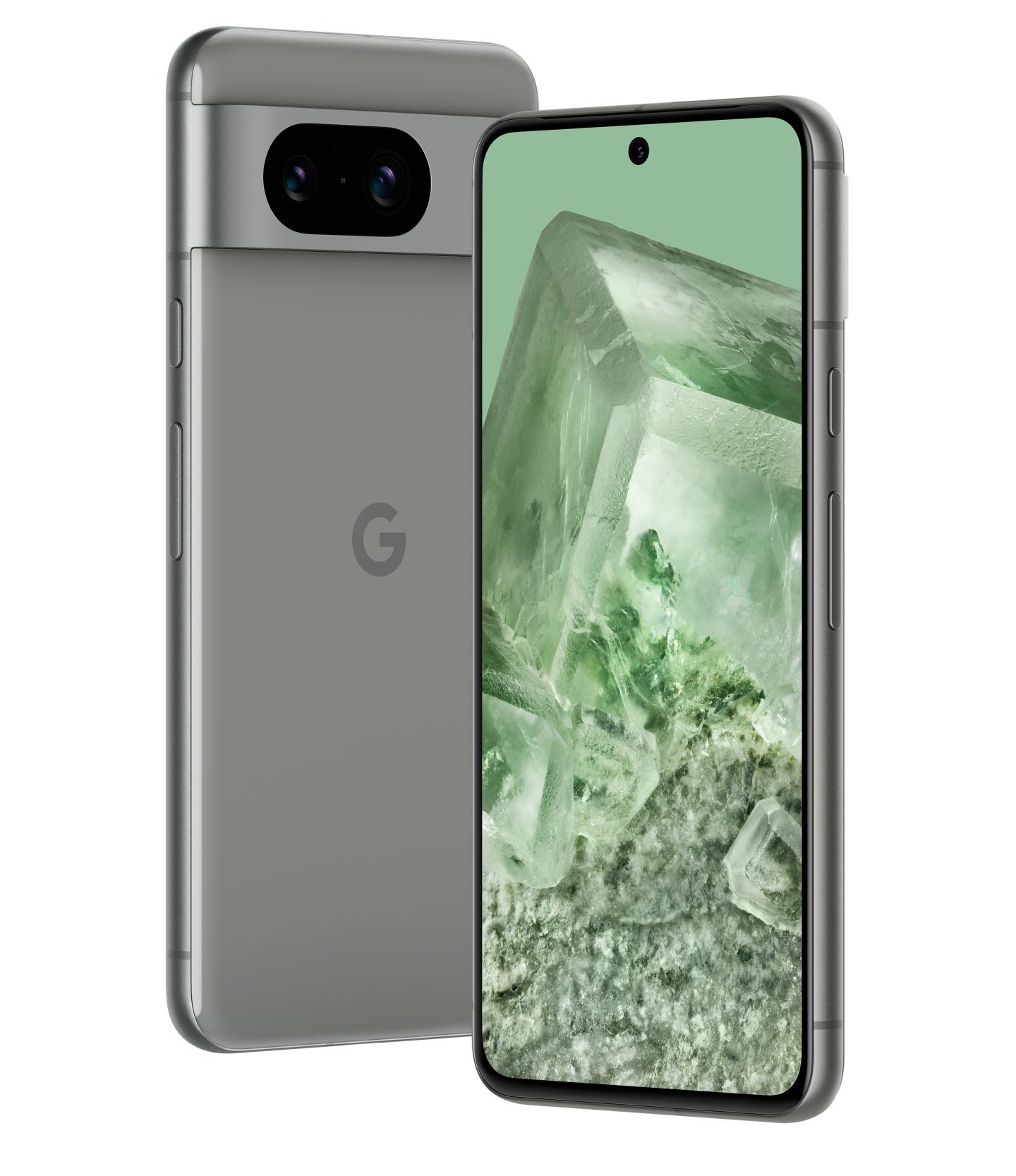 The cheaper Pixel 8. Google is calling this colour "hazel?" I don't know about that.Google
The cheaper Pixel 8. Google is calling this colour "hazel?" I don't know about that.Google -
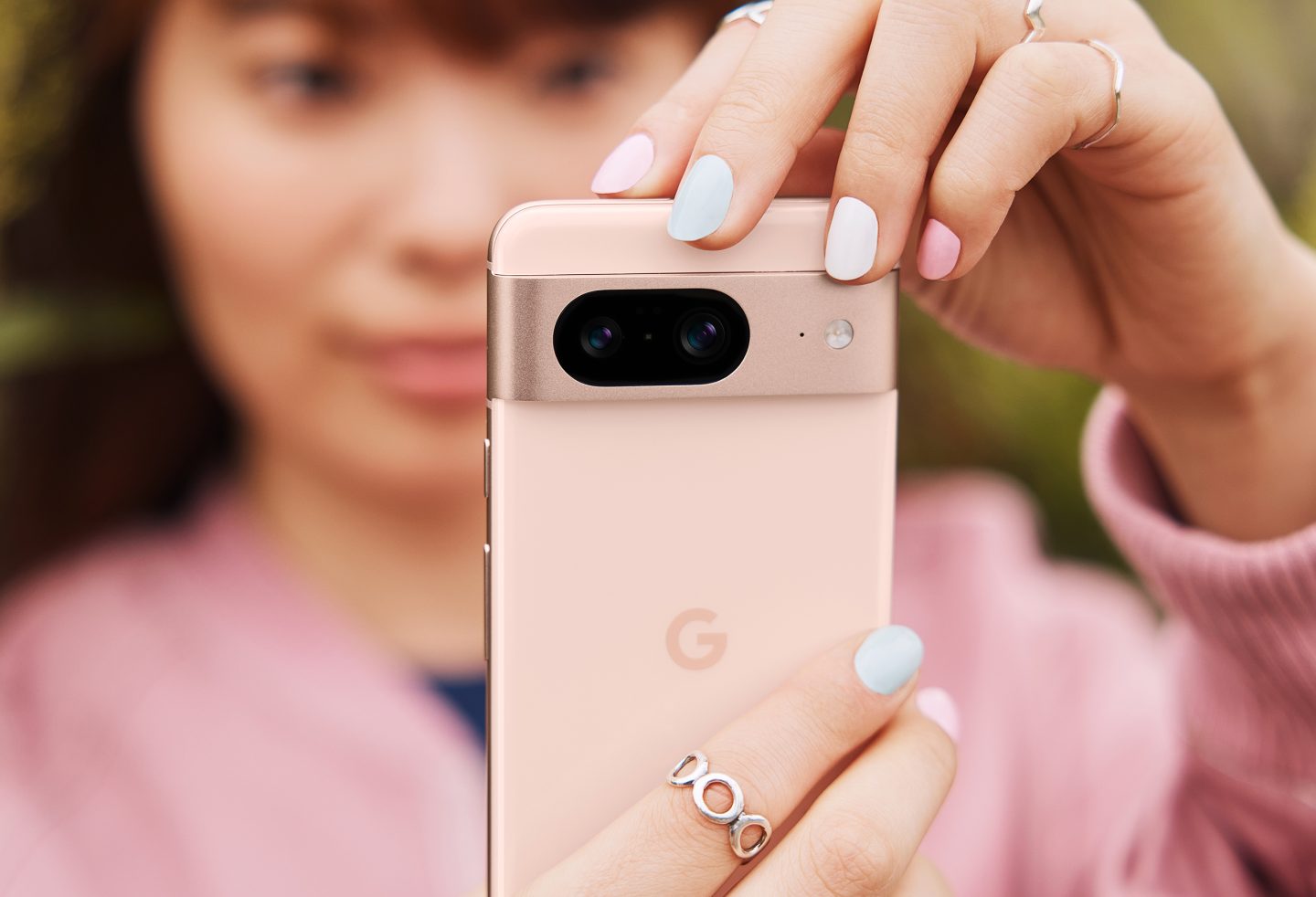 The back. This one has one less camera.Google
The back. This one has one less camera.Google -
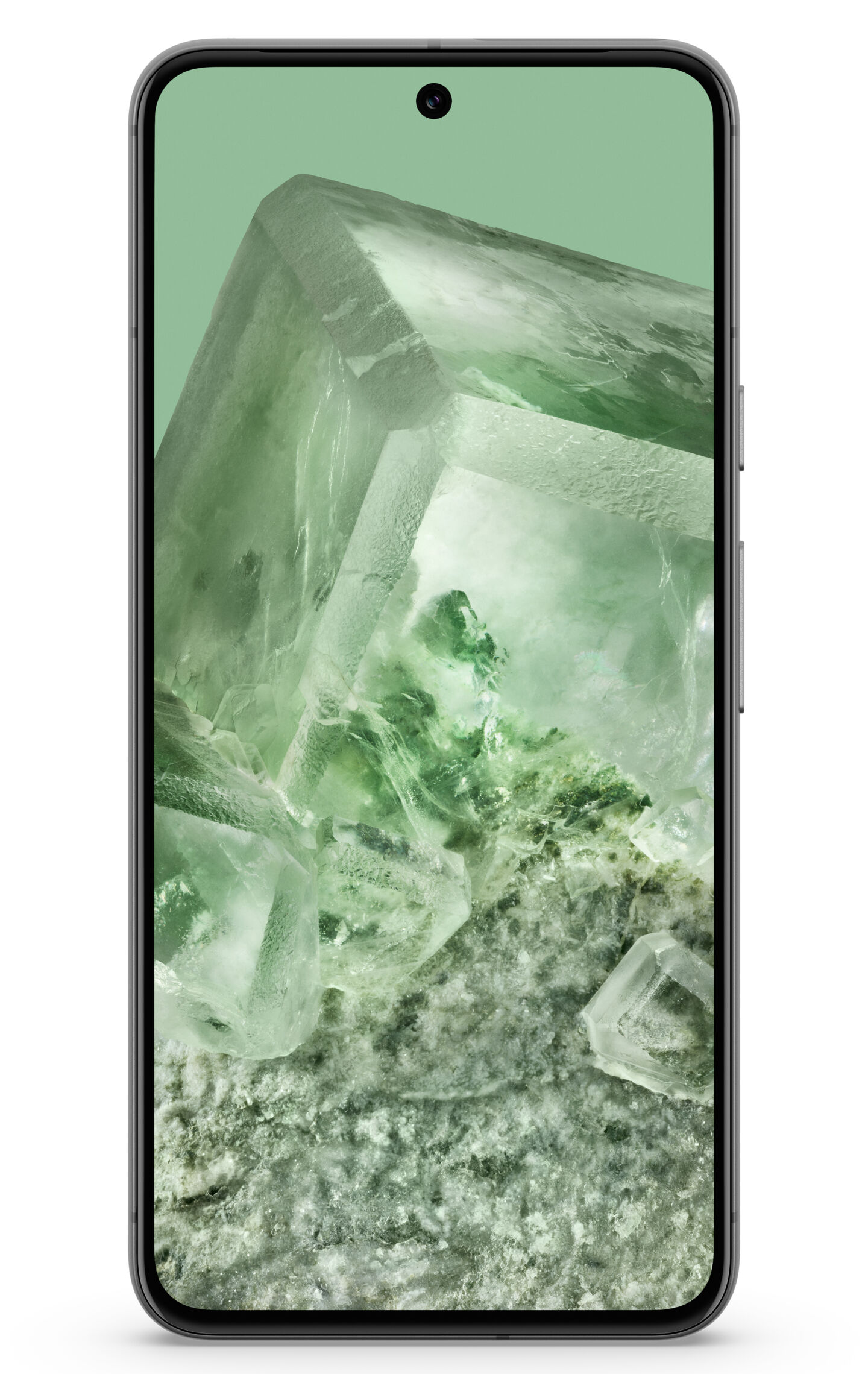 The screen is still a rectangle.Google
The screen is still a rectangle.Google -
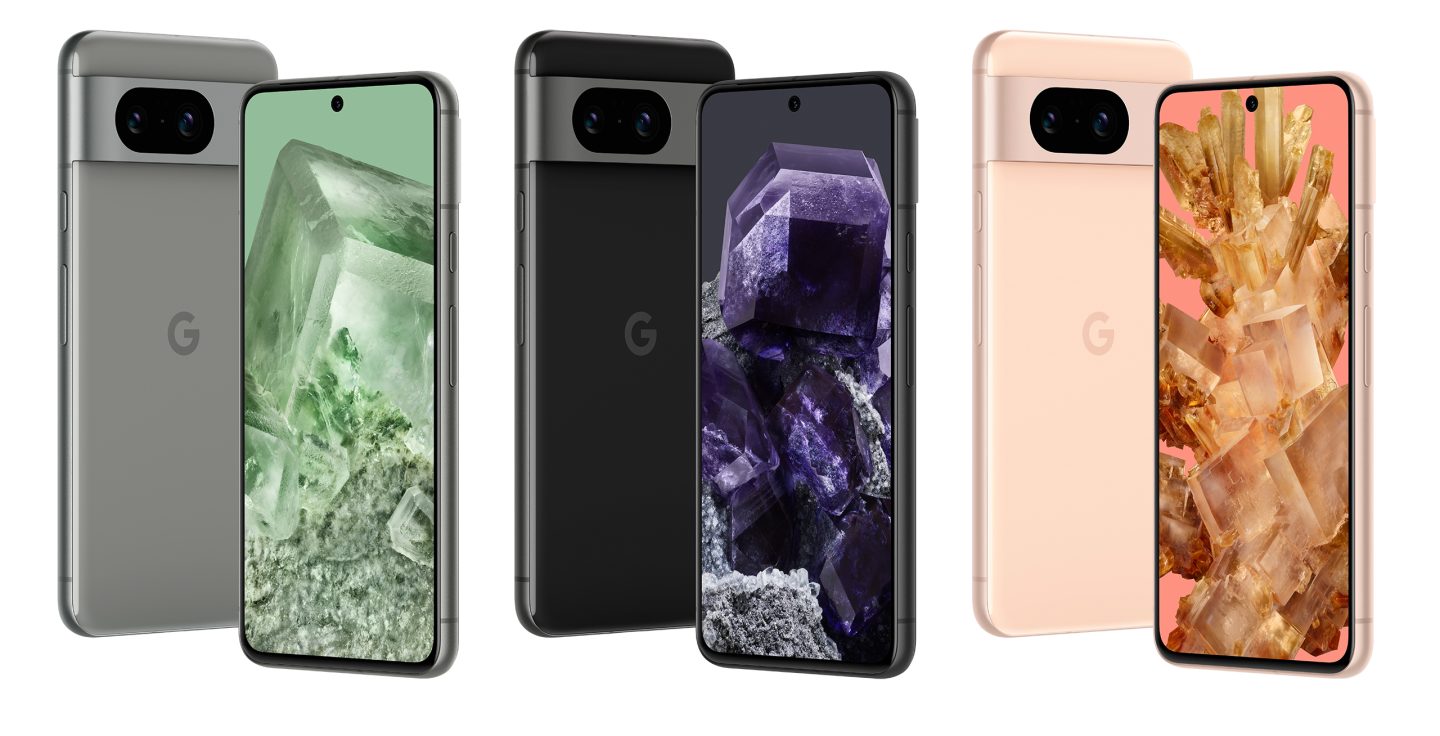 The colour lineup.
The colour lineup.
Other Pixel 8 specs include 8GB of RAM, 128GB and 256GB storage tiers, and a 4575 mAh battery. Charging on the cheaper phone is still at 30 W wired, while wireless is down to 18 W on the Pixel stand and 12 W on Qi.
Cameras on both units start with a 50 MP main sensor, a 48 MP ultrawide, and a 10.5 MP selfie cam, while the Pro adds a 48 MP 5x telephoto. This year there are manual camera settings for the Pro model.
This is the first time the Google Tensor 3 SoC gets a CPU upgrade. The last two chips wandered off the beaten path with a dual Cortex-X1 configuration, but this time Google sticks to Arm's 2023 chip design with a single Cortex X3, four Cortex-A715 CPUs, and four Cortex A510 CPUs, plus an Arm Immortalis-G715 GPU.
The Tensor represents Google's attempt to throw off the shackles of Qualcomm and build its own chips (with the help of Samsung's Exynos division), but it hasn't brought a lot to the table. This year, there is finally something tangible to point to—7 years of OS updates. Unlike with previous models, there are no games being played here, as Google says there are "7 years of OS, security, and Feature Drop updates." That's more major OS updates than even iPhone owners are getting, with the iPhone X getting iOS versions 11-16.
The worldwide availability of Pixel phones remains extremely limited, but this year Google is up to 20 regions. The official list is "US, Canada, Austria, Denmark, France, Germany, Ireland, Italy, Netherlands, Norway, Portugal, Spain, Switzerland, Sweden, UK, Australia, India, Japan, Singapore, and Taiwan." Compared to last year's list, the three new Pixel countries are Austria, Portugal, and Switzerland.
Pre-orders for both phones start today, and they ship October 12.
Listing image by Google


3175x175(CURRENT).thumb.jpg.b05acc060982b36f5891ba728e6d953c.jpg)
Recommended Comments
There are no comments to display.
Join the conversation
You can post now and register later. If you have an account, sign in now to post with your account.
Note: Your post will require moderator approval before it will be visible.